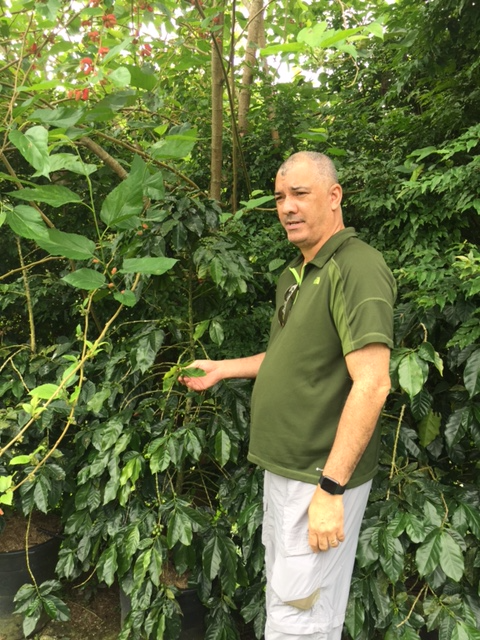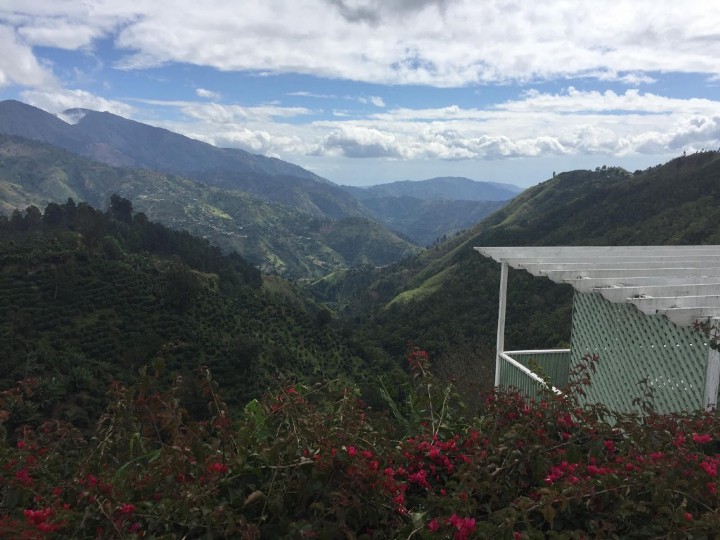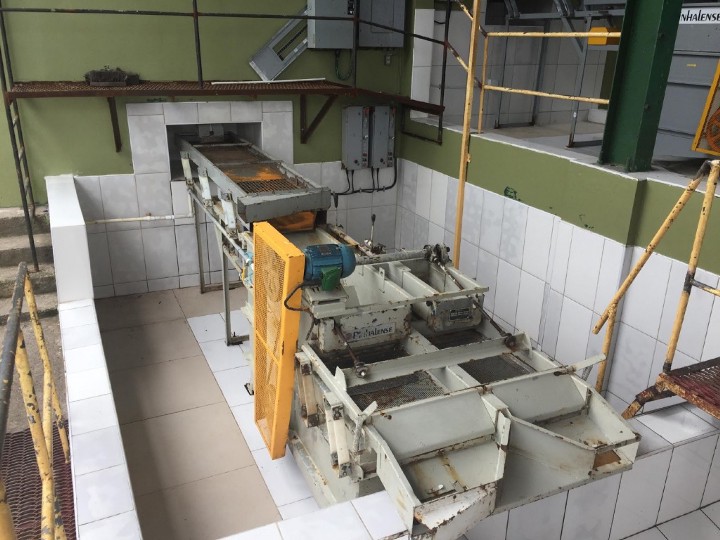While I was in Jamaica for the Destination Experience event, I took the opportunity to learn more about Jamaican coffee production. As an owner of an artisan coffee roasting business (www.thebeanery.com), I try to learn as much as possible about coffee production. Since I was in Jamaica, I wanted to connect with someone who makes Jamaica Blue coffee, some of the very best coffee in the world. Through our U.S. distributor, Royal Coffee out of New York, I was connected with Jason Sharp of Coffee Traders Ltd. A series of emails led to Jason agreeing to pick up my wife Samantha and me on a Sunday morning for a Blue Mountain coffee field trip.
Jason is a fascinating individual. In just a few minutes, we learned that he went to college at Valdosta State University, the college that is in the town where the Beanery is located! It is a very, very small world. He played tennis for VSU for a couple of years prior to the date that Samantha and I moved to South Georgia.
With Jason, we drove up the mountain to the primary facility, stopping along the way at one of the company’s retail coffee shops. We learned about the various ways that Jamaican blue coffee is grown, harvested, and sold, both as raw beans and as roasted coffee. A full 70% of all Jamaican coffee is sent to Japan – they are crazy for it. Some of the upper-end, best of the best, Jamaican Blue coffee sells in Japan for $300 a pound!

Jason Sharp of Coffee Traders Ltd showing off growing coffee beans
We continued on to the peak of the mountain where the primary farm was located. It was a beautiful location with a house surrounded by a lovely garden, perched at the very top of the mountain. All around the hills were row after row of coffee plants. The hills were quite steep and it makes one wonder how workers harvested at that amount of incline. A system of manual harvest combined with the latest technology has enabled a very efficient method of getting the coffee cherries out of the field and processed to extract the bean.

♪ The hills are alive with the growing coffee ♪
I won’t provide the whole process here, but one of the fascinating elements for me is how the best coffee is separated from the just really good coffee. Turns out that overripe, under ripe, and otherwise undesirable cherries float in water, so a system has been created to separate these out as an initial part of the production process. Coffee cherries come in from the field and are separated by quality.

Coffee cherries come in from the field and are separated by quality
There is a large machine that separates the coffee cherry from the bean inside. The bean is then treated in a special way. The essence of it is that the coffee bean is tricked into thinking that it is going to mature and ferment, then the process is abruptly stopped. This leaves the beans with maximum sugar content and ready for drying and roasting.
Innovation can come in many forms and is endemic to every industry of any type that is vibrant and growing. I have a great deal of farmers. These are people who take all the money they have and bet it on the weather. Throw in disease, insects, social unrest, labor issues, etc. and farming is a very risky business, but people like Jason have consistently been successful based on operating under Grounded management principles, treating employees and customers as partners and innovating.
If you have not tried Jamaican Blue coffee, you are missing out. Check out Jason’s company at www.clydesdalebluemountain.com or www.jamaicacafeblue.com. Truly a wonderful experience!

Where can I purchase your coffee?
Hi Sylvia,
Thanks for reading! You can purchase my coffee at http://www.thebeanery.com.
Let me know how you like it!